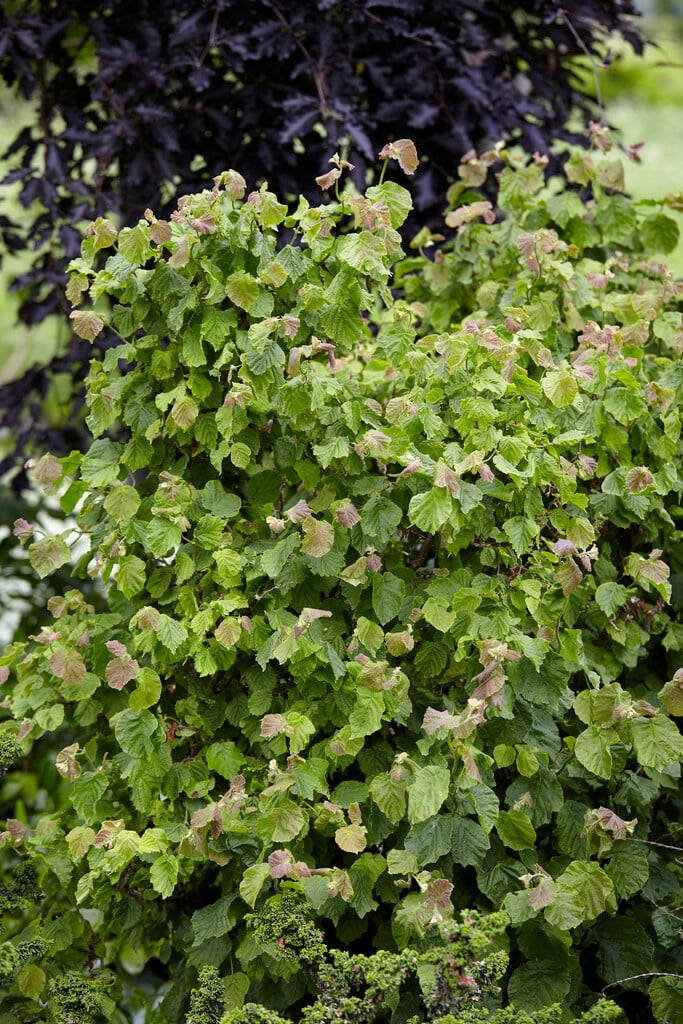Corylus avellana 'Twister'
hazel 'Twister'
Deciduous shrub about 1.5m tall, grown for its attractive twisted and contorted stems. Produces heart-shaped, toothed mid-green leaves that turn yellow in autumn, and pendent yellow catkins in late winter and early spring followed by edible fruits in autumn
Size
Ultimate height
1.5–2.5 metresTime to ultimate height
5–10 yearsUltimate spread
1–1.5 metresGrowing conditions
Moisture
Moist but well–drained, Well–drainedpH
Alkaline, Neutral, AcidColour & scent
| Stem | Flower | Foliage | Fruit | |
| Spring | Yellow | Green | ||
|---|---|---|---|---|
| Summer | Green | |||
| Autumn | Yellow | Brown | ||
| Winter |
Position
- Full sun
- Partial shade
Aspect
East–facing or South–facing or West–facing
Exposure
Exposed or Sheltered Hardiness
H6Botanical details
- Family
- Betulaceae
- Native to GB / Ireland
- No
- Foliage
- Deciduous
- Habit
- Bushy, Spreading branched
- Genus
Corylus are deciduous trees and large shrubs with broad leaves, and showy male catkins in early spring, followed by edible nuts
- Name status
Unresolved
How to grow
Cultivation
Grow in any moist but well-drained soil in sun or partial shade, ideal for chalky soils, large container cultivation and good for flower arranging. For more information see cobnuts and filberts
Propagation
Propagate by layering
Suggested planting locations and garden types
- City and courtyard gardens
- Cottage and informal garden
- Wildlife gardens
- Edible fruit
- Flower borders and beds
- Cut flowers
Pruning
Pruning group 1 but regular pruning not required
Pests
May be susceptible to caterpillars, gall mites, aphids and sawflies. Squirrels like to feed on the nuts
Diseases
May be susceptible to honey fungus, silver leaf and Powdery mildews
Love gardening
Sign up to receive regular gardening tips, inspiration, offers and more
View our Privacy Policy
Get involved
The Royal Horticultural Society is the UK’s leading gardening charity. We aim to enrich everyone’s life through plants, and make the UK a greener and more beautiful place.

